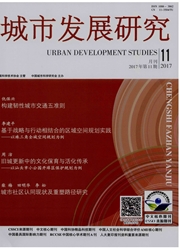

 中文摘要:
中文摘要:
对于人口流出地和人口流入地,由于其流动人口的结构性差异,"人的城镇化诉求"也应有显著差异。基于"人的城镇化"视角,从人口、经济、居住环境、公共服务及城乡协调五个方面对苏浙皖不同人口流入水平地区城镇化的差异化特征做出了探讨,并提出了差别化的应对策略。认为提高居民收入和福利水平是"人的城镇化"的本质内涵,对于人口高流入地,这一目标更为迫切;并回答了应如何正确应对"人的城镇化"的空间差异性这一问题。
 英文摘要:
英文摘要:
Due to the structural differences of its floating population,the demands of urbanization in inmigration area and outmigration area should also have significant differences. This paper discusses the urbanization characteristics of cities with different levels of population inmigration from five aspects,which are population structure,economic development,living conditions,public services,and coordination of urban and rural area. Quantitative analysis demonstrates that,due to the close interactive relationship between urbanization and migration,regions with different immigration rate are also different in terms of population structure,economic development,living conditions,public services,and coordination of urban and rural area,especially in the demands of highly skilled workforce,better public services and identity conversion. In the background of national income promotion and imbalanced labor supply,facing the structural contradiction of population,both the places that populations floating into and floating out should meet the demands of people in the urbanization process. Based on the former analysis,this paper puts forward different countermeasures,including:( 1) those outmigration and immigration cities,especially the latter,should concentrate on people-oriented urbanization,the essential meaning of which is to enhance people' s income and welfare;( 2) because " people-oriented urbanization " is different in different places on spatial demands,only proper policy guidance leads to healthy urbanization process.
 同期刊论文项目
同期刊论文项目
 同项目期刊论文
同项目期刊论文
 期刊信息
期刊信息
